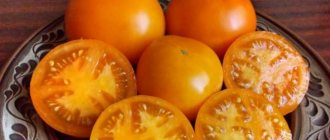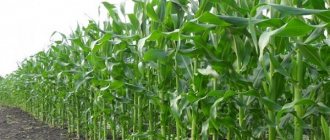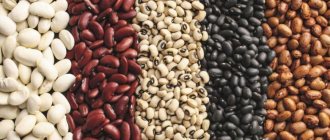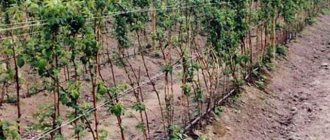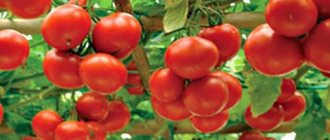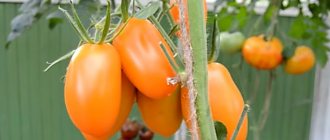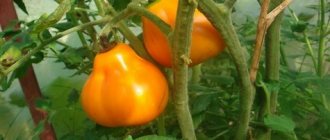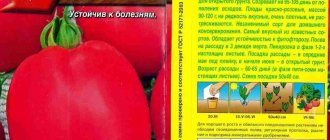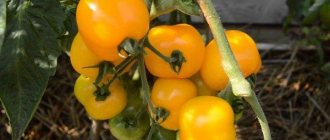Growth phases
Unlike many crops, corn has 6 growth phases, which have a great influence on the final yield that you can harvest from 1 hectare.
Corn shoots appear approximately on the 7th day if the weather is good and the seeds are properly prepared, or on the 15th day if the weather is not warm. In the future, the number of leaves helps to navigate the growth stage of the crop.
The next phase is 5-6 leaves, when the growth of the stem and leaves slows down somewhat as the roots begin to actively grow. They consist of several tiers, branching abundantly as the plant develops. Primary roots appear from the sprouted seed; they are located on the “second” tier, from which nodal roots are formed, the so-called “third” tier. There are also supporting roots that give the plant stability during the growing season.
The next stage is the formation of the 8th leaf, when the aerial part begins to actively develop again. In this phase, the plant forms a large number of stepsons, which die off at the end of the season.
The flowering stage occurs in this way: the panicle (male inflorescence) forms pollen and then drops it on the ear (female inflorescence). This occurs within 8-9 days, accompanied by the appearance of stamen filaments.
Once cross-pollination has been successfully completed, the grain filling phase begins. Corn goes through three stages of ripening: milk, milk-wax, wax. The grain picks up useful substances from the plant, and how much there will be depends on how well you fertilized the soil.
The final stage of corn growth (and it doesn’t matter whether you grow it for grain or silage) is the formation of a black spot. This is the area at the base of the grain, which means the ear is fully ripe and ready to either go into silage or provide you with juicy grain.
Pre-sowing soil treatment for sowing corn
The main pre-sowing treatment of arable areas is carried out in the fall and consists of plowing the fertile layer to a depth of 25-30 centimeters using chisels or combined disc subsoilers. The “zero-till” system allows the use of mulchers to chop up the green mass remaining after the previous harvest. At the same time, if necessary, the land can be treated with preparations to destroy perennial weeds.
Spring pre-sowing preparation consists of harrowing, the main purpose of which is to close moisture by destroying the formed capillary channels.
Choosing a corn variety (hybrid)
The main criterion is compliance with the agroclimatic conditions of the area where sowing will take place. The FAO classifier, the organization responsible for food and agriculture under the UN Council, will help you make the right choice. All currently existing varieties are assigned numbers from 100 to 900. Without going into details, I would like to note that for the north and west of Ukraine, varieties with indices from 200 to 250 are excellent, and for the central and southern part of it, hybrids with indices from 250 to 500. It should also be noted that most European and American seed producers pre-treat their products against most diseases and pests.
Protection of plantings from pests
When the tops grow, the plant must be protected from pests. Aphids love juicy young leaves. The root worm destroys the growing point. Insects can destroy the entire crop. Spraying with fungicides will help.
In the early stages, it is effective to treat the plants leaf by leaf with a double dose of urea. The operation is carried out in the evening after sunset. The weather should be calm and windless. If it rains within 3 days after treatment, the operation should be repeated.
Any farmer is interested in obtaining the largest possible corn harvest, so the question of the amount of grain collected from 1 hectare will never lose its relevance. Of course, much in this matter depends on the variety and growing conditions of the plant, but there are always average values, which will be discussed below.
Payback calculation
Depending on the variety, seeds are purchased, the average cost of which ranges from 16,000 to 65,000 rubles. For this amount you can sow 1 hectare of land. Grains from 1 hectare of land can be collected up to 80 centners, depending on the variety. Product return on investment ranges from 40 to 80%.
Much depends on the quality of crop care, the selected variety, growing area and climate zone.
Important! Before starting corn production, it is recommended to familiarize yourself in detail with the growing rules and select the appropriate variety for the cultivation region.
See also
How to distinguish between feed and food corn, the best varieties and application
Read
Protection of plantings from pests
When the tops grow, the plant must be protected from pests. Aphids love juicy young leaves. The root worm destroys the growing point. Insects can destroy the entire crop. Spraying with fungicides will help.
In the early stages, it is effective to treat the plants leaf by leaf with a double dose of urea. The operation is carried out in the evening after sunset. The weather should be calm and windless. If it rains within 3 days after treatment, the operation should be repeated.
Any farmer is interested in obtaining the largest possible corn harvest, so the question of the amount of grain collected from 1 hectare will never lose its relevance. Of course, much in this matter depends on the variety and growing conditions of the plant, but there are always average values, which will be discussed below.
What determines the yield of a plant?
The amount of harvest depends on the growing conditions of corn and the type. For each region there are suitable varieties that give maximum yield.
From variety
Corn can be early - ripens in 50-70 days, mid-ripening - ripens in 80-90 days, and late - ready for harvest in 90-105 days. Depending on the varietal affiliation of the crop, the yield is calculated.
Important! Early ripening varieties produce more ears
From climatic conditions
The culture is considered southern; it is in these regions that it develops quickly and well. However, prolonged heat also requires additional watering and care. For temperate and northern regions, early ripening varieties are used.
From soil fertility
On poor soils, corn may not grow. If the seedlings have formed, then most likely the plant will not be able to set fruit. To grow it, the soil must be rich in nitrogen, phosphorus, and potassium. These elements improve the development of the stem and bush, increase productivity, and help build immunity to infectious diseases.
Popular varieties
800 hybrids and varieties of corn are registered in our country. Of these, 50 are grains. The most popular:
- Tango. Tested in the North-West region. The plant stretches up to 2.5 m. It has long cobs. Average yield up to 100 c/ha. Under favorable conditions it produces up to 145 c/ha. Weakly responds to drought. But a decrease in soil moisture reduces the number of ears. Harvesting begins 100 days after germination.
- Premium MS 190. Designed for regions with cool climates. But it demonstrates excellent resistance to drought. The height of the stem is about 2m. Ripens within 112 days. Cultivated relatively little - 10 years.
- Oriol. Grown in the Volga region. Drought resistant. The grain is large. The cobs are full. The stem height is less than 1.7 m. This makes it easy to grow and collect. Productivity 120 c/ha. Used for human consumption and as animal feed.
You can grow green mass for silage production from any variety. To do this, planting is done later or harvesting is done earlier.
The most fertile varieties and hybrids
There are many types and varieties of crops. The main preference is given to early-ripening species that manage to ripen before the dry period begins and also produce a rich harvest. These include:
- Collective 160. Ripens in 90-100 days. The average yield is 80-85 c/ha.
- Bemo 182. Hybrid species, the growing season lasts 95-105 days. Under favorable growing conditions it yields up to 90 c/ha.
- Dokuchaevsky 250. Suitable for growing in temperate climates. It bears fruit 100-105 years after planting. Collect up to 80 c/ha.
- Corsair 315. Refers to mid-season hybrids. Produces tall plants up to 270 cm. Productivity is 80 c/ha.
- Spirit. Early ripening variety. Ripens in 55-60 days. It takes root well on any soil and is suitable for cultivation in all regions. Up to 70 centners of crops are harvested from 1 hectare of land.
- Gourmand 121. Early variety, ripens in 70-80 days. Harvest up to 55 c/ha.
See also
What is corn - a vegetable or fruit, what family does the grain belong to and where is it used?
Read
Dependence of yield on variety
Unfortunately, breeding work with corn in our country is not very extensive. There are not very many varieties that produce good yields. But of course there are such varieties in Russia. Currently, the following corn varieties show the best yield:
- Gamma is a Russian Krasnodar, very unpretentious and fast-growing hybrid (up to 145 c/ha).
- Krasnodar grain with a ripening period of 85 days and a yield of 119 c/ha.
- Athlete is a tall plant with a ripening period of 85-88 days and a maximum yield of 127-137 c/ha.
- Porumbel is a three-line hybrid with a ripening period of only 65 days.
Also, the hybrid SI Phenomenon can be cultivated in fields in Russia. The yield of corn of this variety is 120-130 c/ha. This hybrid belongs to the group of early ripening ones.
The most popular varieties of feed corn grown for silage are:
- Partisan - accumulates in the stem up to 90% of all starch and 14% fat (feed units - 6400/ha);
- Krasnodarsky 4 - a hybrid with dense tall stems (8700/ha);
- Sterling is a disease-resistant variety (up to 6950/ha).
Krasnodar 291 AMV (FAO 290)
This mid-early corn hybrid is also the brainchild of the National Center named after. Lukyanenko. It is much younger than the leader of the rating (zoned in 2005), approved for use in the Central region for silage, and in the Central Black Earth and North Caucasus regions for grain.
The maximum grain productivity of grain in the conditions of the Central Black Earth region was 106-107 c/ha, in the North Caucasus region - 116 c/ha.
Compared to 2021, the hybrid also lost a little popularity: farmers used only 3.6 thousand tons of grain compared to 3.8 thousand tons the season before.
Growing from seed
Growing the crop is possible in 2 ways: sowing directly in open ground or through seedlings, followed by planting on a personal plot. Each method has advantages and disadvantages.
Growing corn without seedlings does not allow you to get an early harvest, but caring for the plantings is much easier. Plants in this case are more resistant to unfavorable environmental conditions.
Preparing grains for sowing
When choosing seed, you should take into account the purpose of growing the crop. All hybrids and varieties are divided for cultivation for grain and consumption. The yield, taste and characteristics of growing corn depend on this.
For sowing, seeds of classes I and II are used, the germination rate of which is not lower than 92%.
Pre-sowing grain treatment includes sorting, calibration, and chemical treatment of seeds. The grains are calibrated to obtain more uniform shoots. Sorting is carried out to reject seeds with defects. Dressing protects seed material from pests and diseases. All these procedures are carried out at special enterprises.
To improve germination, 7 days before sowing, grains are subjected to air-heat treatment at +25...+35 °C and good ventilation. 2-3 days before sowing, the seed material is washed. During the process, unsuitable seeds float to the surface and are removed. High-quality grain is wrapped in gauze, filled with water at room temperature and kept until germination.
Another way to prepare corn seeds for sowing: they are kept in the sun for 5 days, and before planting they are soaked in warm water (+45 ° C) for 1-1.5 hours. The grains are then dried naturally.
Before planting, the seeds can be treated with Mercuran or Granosan against pests and various diseases.
The choice of varieties affects the sowing time. Corn for consumption on the cob, freezing and canning is sown in late April - mid-May, when the soil warms up to +12 ° C and the threat of frost disappears.
Subject to agricultural technology and suitable environmental conditions, seedlings should appear on the 12th day. For these purposes, early varieties are used. Corn for grain is classified as late corn. It is more resistant to adverse weather conditions.
Sowing technology
The technology for growing corn for grain involves 2 sowing methods: dotted and square-cluster.
In the fields, corn is sown using an SPC-6M seeder with a pneumatic disc-type sowing unit or SUPN-8 combined seeders, which can simultaneously apply mineral fertilizers along with the seeds.
Another sowing method is square nesting, in which the row spacing is 70x70 or 70x90 cm. In arid regions and on poor soils, corn is sown with row spacing of 70x140 cm. 1, 2 or 3 grains are placed in each nest hole.
After the seedlings appear, weak shoots can be pulled out. To plant corn in this way, SKNK-8 and SKNK-6 seeders with mechanical cell-disc sowing devices are used. More often this option is used when planting seedlings.
On a personal plot, corn is sown in rows with row spacing of 60 cm and a distance between plants of 40 cm.
Regardless of the chosen sowing method, you need to know how to carry out the work correctly. Maintaining row spacing makes it easier to care for plants and allows them to feed normally. The seeding depth is 6-8 cm. The soil should be well moistened and completely cover the grains.
Features of growing corn for grain
The most important condition for obtaining a high yield is the choice of seed. The excellent productivity of corn, a sharp increase in its yield due to the application of fertilizers, and the ability to extract nutrients from the soil contributed to active breeding studies.
As a result, specialists created high-yielding corn hybrids and early-ripening species. Therefore, the best option for sowing would be hybrid varieties with high yield potential and the ability to quickly and easily adapt to unfavorable growing conditions or early ripening varieties.
American hybrids “Pioneer” have proven themselves to be excellent; the southern territory of the country is best suited for planting them. Excellent corn yields in Russia last year were ensured by domestic varieties such as Collective 181, Korsar, Bemo 182, and Dokuchaevsky. Unlike foreign ones, they can be sown in almost all regions of the country.
The Lakomka variety is deservedly popular. Its growing season is only 75 days. It is invulnerable to insects and diseases.
The plants reach a height of up to 1.5 meters, the heads of cabbage are of medium size. The grains have excellent taste and are great for canning or cooking. Last year, about 50 centners of crops were harvested from one hectare of land.
The Spirit variety is another yield champion. Thanks to the ripening of heads of cabbage within 2 months after planting, the harvest can be harvested even before the onset of hot, dry weather. The bushes of the variety are about 2 meters, the cobs are large (up to 25-30 cm). On average, 70 centners of corn of this variety are harvested from 1 hectare of area.
Another main criterion for crop yield is watering. During the growing season, watering should be done at least twice. For varieties that are more demanding of moisture, the number of irrigations must be increased up to 3-4 times.
Choosing a landing site is the key to an excellent result. Corn shows the best yield when the soil contains 20% oxygen. Hard soil will not allow the plant’s root system and stems to develop well. Therefore, before planting, you should plow the soil 30-35 cm deep.
The best predecessors of corn are potatoes, winter crops, legumes, nightshades, pumpkins, and grains. These crops, unlike sunflowers or beets, do not deplete or dry out the soil to a significant depth.
This issue should be approached responsibly, since it plays a decisive role in providing the cereal with nutrients and regulating the number of pests.
For the “queen of the fields”, an important condition is the availability of the necessary organic and mineral fertilizers. Corn will not produce excellent yield results if the soil acidity is high. Therefore, it is advisable to carry out liming. When plowing the land, manure or superphosphate is added.
To increase the average yield by 5-10 centners per 1 hectare, about 40 tons of manure will be needed. When sowing on soddy-podzolic soils, it is better to apply nitrogen and potassium fertilizers, and on chernozems - phosphorus. The content of zinc and molybdenum will increase the drought resistance of the crop. A stable level of mineral saturation must be regulated throughout the season, right up to harvest.
In spring, all weeds on the field should be completely destroyed, otherwise the sown grain will be spoiled. Treatment with herbicides is carried out twice to a depth of about 12-15 cm: during harrowing and immediately before planting. The concentration is calculated according to the instructions.
It must be taken into account that corn is a heat-loving crop. The optimal soil temperature for sowing will be 10-12 degrees at a depth of 10 cm for seedlings to appear.
For many farmers, it will be practical to use the following summary to calculate the required number of seeds for sowing:
| Density of cereal plantings at harvest, thousand/ha | Number of seeds for sowing, per 1 linear m, pcs. | Measure of sowing seeds of 1st class, kg/ha | |||||||
| Weight of 1000 grains, g | |||||||||
| 160 | 180 | 200 | 220 | 240 | 260 | 280 | 300 | ||
| 53 | 4,1 | 9,3 | 10,5 | 11,1 | 12,8 | 14,0 | 15,1 | 16,3 | 17,1 |
| 57 | 4,4 | 10,0 | 11,3 | 12,5 | 13,8 | 15,0 | 16,3 | 17,5 | 18,3 |
| 61 | 4,8 | 10,8 | 12,1 | 13,4 | 14,8 | 16,1 | 17,4 | 18,8 | 20,2 |
| 65 | 5,1 | 11,5 | 12,9 | 14,3 | 15,7 | 17,1 | 18,6 | 20,0 | 21,1 |
| 69 | 5,4 | 12,2 | 13,7 | 15,2 | 16,8 | 18,2 | 19,8 | 21,3 | 22,2 |
| 73 | 5,7 | 12,9 | 14,5 | 16,1 | 17,7 | 19,3 | 20,9 | 22,5 | 24,2 |
| 77 | 6,0 | 13,6 | 15,3 | 17,0 | 18,7 | 20,3 | 22,0 | 23,9 | 25,1 |
| 81 | 6,3 | 14,2 | 15,9 | 17,7 | 19,5 | 21,2 | 23,0 | 24,7 | 26,3 |
In order to get the harvest early and not expose it to the risk of being destroyed by insects, plant corn seedlings. Various hybrid varieties and types of sweet corn are suitable. Seedlings should be planted in the ground when it warms up to 13-15 degrees.
How to achieve maximum corn yield: tips and tricks
Every farmer or summer resident strives to collect as much corn as possible on his plot. To achieve the desired goal, it is recommended to perform the following operations:
- choose a field with well-drained soil and high moisture retention capacity;
- the ideal predecessor is clover or alfalfa; it can also be legumes or nightshade crops. In the garden - potatoes, beans, tomatoes, cucumbers;
- providing the area with moisture guarantees a good result;
- during dry periods, carry out regular loosening of the soil;
- observe the norm for sowing seeds. The maximum yield can be obtained with a planting density of 55-70 thousand plants per hectare;
- do not overwork the soil. It is recommended to plant corn in the same area once every 3 years;
- maintain the distance between rows: in the fields - within 70 cm, in the garden - 40 cm;
- apply fertilizers. During sowing, 25 kg of nitrogen, 40-50 kg of phosphorus and 30 kg of potassium fertilizers are required per 1 hectare of area. Add nutrients along with the seeds using a special seeder. During soil cultivation, increase the amount of nitrogen fertilizers to 70-120 kg per hectare;
- destroy weeds, otherwise the corn may not survive the competition. To do this, it is necessary to harrow 5 and 10 days after sowing. Weeds that grow together with the “queen of the fields” should be destroyed by post-emergence harrowing. This problem can also be solved with the help of herbicides. It is advisable to control weeds before they appear;
- spray with insecticides, which will protect plants from pests and diseases, and also ensure dense plantings of strong seedlings in the future;
- Harvest crops correctly and in a timely manner. The collection should be carried out very carefully. It is better to carry it out 1-2 weeks earlier than expected in order to avoid husking of the grains and lodging of the stem. Harvesting can begin in the milky ripeness phase, when the stigmas are just beginning to dry out. During this period, the grains contain the maximum amount of sugar; later it turns into starch.
Completing all these activities will ensure maximum corn yield, but only if done in a timely manner.
Tips for increasing crop yields
To increase the amount of harvest, you must follow several rules, as well as know how to properly cultivate and prepare the soil.
Cultivation techniques
The rules for growing corn must be followed to obtain a good harvest and large fruits:
- Seeds are planted according to the scheme. There should be a distance of 60 cm between each row. After the first shoots, the seedlings are thinned out.
- A gap of at least 15 cm is left between plants, since the plants are large and can interfere with the normal development of each other.
- Deepen the grains 5-7 cm into the soil.
- The culture prefers abundant watering at least once a week.
- When side shoots appear, they are cut off, as they deteriorate the quality of the cobs.
- The soil in the root area is constantly loosened to avoid crust formation.
- Regular feeding is carried out, which improves the development of fruits and the plant itself.
What kind of culture is this?
In Russia, this crop was traditionally grown in the southern regions: in the Kuban, Caucasus, Rostov and Voronezh provinces. The grown crops were fed to animals and used as food. Bread was made from corn flour.
In other regions, the crop was not planted: there was not enough heat and light. Since Khrushchev's visit to the United States, the situation has changed. The Secretary General assessed the technical characteristics of the plant and declared corn the “queen of the fields.” They began to plant areas in all regions of the country with it.
But grain varieties were not given - they were not zoned. Today the situation has changed. Breeders have created varieties and hybrids capable of ripening. Corn is grown almost throughout the country.
Gardeners in small areas receive a good harvest of corn for grain. To do this, it is enough to choose the right planting material and fulfill the requirements of agricultural technology.
Corn yield data
Based on crop yield data in Russia, the optimal climate for cultivation can be determined.
By region of Russia
By region of Russia, corn yields are:
| Region | Harvest quantity in thousand tons |
| Krasnodar region | 3,360 |
| Stavropol region | 938 |
| Belgorod region | 747 |
| Rostov region | 630 |
| Kursk region | 529 |
| Voronezh region | 517 |
| Kabardino-Balkarian Republic | 396 |
| Tambov Region | 297 |
| Republic of Tatarstan | 277 |
| Lipetsk region | 230 |
| Republic of North Ossetia–Alania | 214 |
| Saratov region | 192 |
| The Republic of Mordovia | 192 |
| Republic of Adygea | 156 |
| Volgograd region | 142 |
| Oryol Region | 137 |
| Bryansk region | 127 |
| Karachaevo-Circassian Republic | 102 |
| Ryazan Oblast | 79 |
| Nizhny Novgorod Region | 79 |
On years
Every year the corn yield is different. It depends on the cultivation method, variety and weather conditions. Average yield by year:
| Year of cultivation | Amount of harvest in c/ha |
| 2000 | 21,2 |
| 2001 | 18 |
| 2002 | 28,5 |
| 2003 | 32 |
| 2004 | 40,3 |
| 2005 | 38,5 |
| 2006 | 36,2 |
| 2007 | 29,3 |
| 2008 | 38,6 |
| 2009 | 35,3 |
| 2010 | 30 |
| 2011 | 43,4 |
| 2012 | 42,4 |
| 2013 | 50,1 |
| 2014 | 43,6 |
| 2015 | 49,3 |
| 2016 | 54,6 |
Over the course of 16 years, the amount of harvest received has doubled. This has been facilitated by the development of new varieties with high yields and disease resistance, as well as improved agricultural practices.
P 8521 (FAO 200)
In fifth place in popularity in the Rosselkhozcenter ranking was the early-ripening hybrid of the company Pioneer P 8521. In 2021, 1.9 thousand tons of seeds of this hybrid were sown - 200 tons more than the year before.
The hybrid was zoned in 2014 in the Central Black Earth and Far Eastern regions for grain. The average grain yield in the Far Eastern region was 52.6 c/ha.
The originator states that in this hybrid a balance was found between early ripeness and productivity; the plants are characterized by a very rapid release of moisture from the grain, high resistance to drought and tolerance to northern helminthosporium and loose smut.
Correct technology for sowing and cultivating corn
Despite many miscalculations, excesses and general stupidity, Nikita Sergeevich Khrushchev was right. It is difficult to find another agricultural crop that has such a significant impact on the economy of the country that cultivates it. The high nutritional value determines the main uses of corn as a feed crop (silage for cattle, grain for pigs and poultry), in cooking, and its saturation with vitamins and a unique combination of amino acids allows it to be widely used as a raw material for the production of medicines.
Corn grain is a source of starch, which is used in the pharmaceutical, paper, mining and construction industries. A special method of grain processing produces ethanol, which is widely used today in the production of biofuels. What knowledge should a farmer have to successfully grow this crop? What nuances and features in field preparation, fertilizing and pest protection will allow you to reap the maximum harvest?
General information
Corn is one of the most heat-loving agricultural crops. Seed germination is possible at a minimum temperature of 8-10 ºС; seedlings in the “two-leaf” phase can withstand short-term frosts down to -2 degrees and die when the ambient temperature drops to -3. Corn tolerates drought well, however, to achieve an estimated yield of 80-90 centners per hectare, a minimum of 500-600 millimeters of rainfall or equivalent is required when using an irrigation system. This crop does not tolerate shading well, therefore, excessive thickening of crops leads to a drop in yield.
Monoculture or crop rotation?
The most effective system was a crop rotation system in which the predecessors of corn were crops such as potatoes, winter wheat and legumes. Good results are shown by occupied fallow, less satisfactory results are shown by sugar beets and spring grains. With the correct selection of fertilizers and a favorable acid background that does not require correction (from 5.5 to 7.0 pH), corn can be sown as a monoculture.
Features of growing corn for silage
Late-ripening varieties are most suitable for growing cereals for silage. It is important to pay attention to the nutritional qualities, immunity of the cereal, and resistance to negative factors.
You can increase the yield of corn by mixing varieties of different ripeness. This will allow you to collect silage along with unripe cobs. Proper care will ensure a yield of about 60 t/ha, and with the use of irrigation systems - up to 100 t/ha.
It is better to choose cereals or legumes as a predecessor to corn for animal feed. It is imperative to calibrate the grain for planting and sow it when the soil warms up to 10-12 degrees.
After harvesting the previous plant, it is necessary to treat the sown area with herbicides: popular preparations are Titus, Basis, and Primextra.
Popular varieties
800 hybrids and varieties of corn have been registered on the territory of our region. Of these, 50 are grains. Most popular:
Tango. Tested in the Pivnichno-Zakhidny district. Roslina stretches up to 2.5 m. Long swings can occur. The average yield is up to 100 c/ha. With sympathetic minds it can reach up to 145 c/ha. Weakly responds to drought. If the moisture content of the soil decreases, the number of pumps will decrease. Cleaning up begins 100 days after the departure. Prize 190 MS. Developments for regions with cold climates. Ale demonstrates the remarkable firmness of dryness. The height of the stem is approximately 2 m. Ripens for 112 days. It is cultivated very little - 10 rocks. Orioli. Found in the Volga region. Dry. The grain is great. Swing upwards. The height of the stem is less than 1.7 m. This is easier to handle and harvest. Productivity 120 c/ha. It is used as food for people and as food for animals.
Green masa for making silage can be grown in any variety. For this purpose, planting should be done later or tidied up earlier.
Known hybrids
The price of hybrid seeds is 30% higher. This is due to the production costs of achieving the required characteristics. But gardeners with small plots should choose them: the planting area will be reduced. The average annual precipitation rate for hybrids is reduced.
- Euro 401. Designed in Poland. It has high productivity. If the growing conditions are met, 160 c/ha will please you. Grows up to 2.5 m. Each stem bears 4 ears. The grain is leveled. The average ripening period is about 120 days from germination to harvest. Ripens steadily under different weather conditions. Not afraid of drought.
- Ross. Made in America. It has long been acclimatized in our country. Gives record yields - 12 t/ha. But the hybrid is demanding when it comes to watering. Does not tolerate drought well.
- Krasnodarsky 436 MV. Tall (up to 2.7 m) stems, wide leaves. The ground is well shaded and moisture is retained for a long time. Water consumption is reduced and the labor intensity of cultivation is reduced. Productivity up to 160 c/ha. Heavy green mass allows you to prepare excellent silage.
You should not think that the hybrid does not require care. The declared yield can only be achieved if the rules of agricultural technology are followed.
Sowing
When choosing a site, preference is given to a warm, sunny place. Light soil with good water drainage is best.
Soil fertility is important. Therefore, organic and potassium fertilizers are added to the soil in advance.
Immediately before sowing, the soil is leveled, breaking up lumps of earth.
Growing from seeds
To obtain tasty and juicy grains, the seeds are processed before sowing (Figure 2). To do this, it is enough to warm the grain in the sun for 3-4 days, and then soak it in a solution of potassium permanganate for 20 minutes, rinse it and put it in a warm place for germination. With the appearance of small roots, the seeds can be planted in the ground (Fig. 3).
Small holes 6-7 cm deep are made in the prepared soil, into which 3-4 seeds are dropped and sprinkled with soil. With the appearance of the first shoots, a thinning procedure is carried out, leaving two shoots in each nest. This ensures resistance to lodging.
Figure 3. Scheme of sowing corn in open ground
Those who want to get an early harvest should start growing from seedlings. It can be obtained by sowing a small amount of grains in separate containers to a depth of 2 cm in mid-April. Already in mid-May, the finished sprouts can be transferred to open ground.
Growing from seedlings
In regions with a short thermal period, growing all kinds of crops from seedlings is the most justified and effective.
Thus, the seeds are sown in special pots filled with a nutrient substrate, which includes compost, sand and peat in a ratio of 2:1:1 (Figure 4). In addition, it would not hurt to add wood ash to this nutrient medium at the rate of 200 g per half bucket.
Figure 4. Growing corn seedlings
In each cup prepared in this way, plant one grain to a depth of 2-3 cm, sprinkle with sand, leaving space for adding soil and watering.
10 days before planting seedlings in open ground, they are fed and watered abundantly.
From the video you will learn how to properly grow corn seedlings.
Choosing the most suitable variety
As you know, seed plays a very important role and the amount of grain harvested depends on it. If a variety or hybrid has a very low potential yield, even with ideal care and weather conditions it is impossible to grow more than it should be. Today, more than 800 varieties and hybrids of corn are registered on the territory of the Russian Federation, of which about 100 are actively grown and about 50 are “grain” varieties. Since we are not interested in silage, feed and sweet corn, we will consider the most productive grain varieties:
- Oriol. One of the most famous and drought-resistant varieties of the Volga region with a potential yield of up to 120 c/ha. It is characterized by increased resistance to droughts and diseases. It has a stem up to 170 centimeters in height, which greatly simplifies harvesting and removing unnecessary garbage. The cobs are large in size, the grain is full, uniform in shape and color. Excellent for animal feed and for making cereals.
- Tango is one of the most productive varieties, which can produce up to 145 c/ha. The actual yield is 80-110 c/ha, which was obtained in many breeding plots near St. Petersburg. Corn is tall - up to 240 cm, has great vitality and practically does not respond to drought, although the yield is significantly reduced with a lack of moisture. The cobs are long, almost all the grain is well-executed, without shape defects. The period before technical maturation is 100 days.
- Prize MS 190. A fairly new variety, which has been successfully planted in the northern latitudes of Russia for the last 10 years. Despite the fact that it was bred for planting in cool and humid areas, it is drought-resistant and tolerates hot summers well. The stem height is up to 220 cm, the ripening period is only 108-112 days (mid-season).
Krasnodar 436MV. Potential yield - 160 c/ha; when grown on selection plots, it gave up to 145 c/ha in Krasnodar. The leaves are wide, cover the ground well, which saves moisture for a long time - requires much less watering during the hot period
The only negative is that the tops are too large (stem height up to 260cm), which causes some difficulties for those who do not need corn for silage and only the grain is important.
Euro 401 MV is a good hybrid of Polish selection. With sufficient moisture it can produce up to 130-140 c/ha (potential yield up to 160 c/ha)
There are up to 4 ears on one stem, the height of the tops is up to 215 cm. It is reliable - under different weather conditions it produces stable yields and does not burn during droughts. Technical ripening occurs after 120 days (mid-season variety).
Ross. Originally an American selection, it has been acclimatized in Russia for more than 10 years and produces good yields compared to other hybrids and varieties bred in the Russian Federation. With good care it yields up to 12 tons/ha and requires a lot of moisture - perhaps the only disadvantage of this hybrid. It tolerates drought well, the cobs are large, and the grain has a good specific gravity (1000 seeds = 239 grams).
What is the corn yield per 1 hectare
Corn is more capricious than many crops to which we are accustomed in the middle zone. This directly affects how fertile the plantings will be.
Growth phases
Corn has as many as six growth phases .
Emergence of seedlings
Under good weather conditions, this phase takes 7-8 days, under bad weather conditions – 15-16 days . During this time, the above-ground mass of greenery actively develops, but most resources are devoted to the growth of the root system.
Appearance of panicles
At this stage of crop cultivation, the greatest increase in green mass is observed . In warm sunny weather, the dynamics can be up to 10-12 cm per day. The panicle is formed differently in different varieties:
- early ripening - at the stage of 4-7 leaves;
- mid-season - 5-8 leaves;
- mid-late - 8-11 leaves.
Flowering cobs
Also at this stage, threads are formed and pollination of pistils and stamens occurs . Flowering occurs at:
- early ripening - in the phase of 7-11 leaves;
- mid-season - 8-12 leaves;
- mid-late - 11-16 leaves.
After flowering is completed, the corn will no longer grow greenery , it will remain the same size as it was.
Milky state of grain
During this period, corn matures up to 75% , accumulating useful organic elements.
Milky-waxy ripeness
The corn turns yellow and takes on the appearance familiar to the consumer .
Waxy ripeness
By the end of this stage, the cobs form the largest amount of dry matter .
The most important for determining the yield are the first 10-15 days before the sprouts emerge and the next 20 days before flowering and pollination of plants of different sexes. If the weather is bad at this time (rain, hail, frost, etc.), you should not expect a big harvest.
Average yield
In Russia, the average corn yield is 50-70 c/ha . According to official data, this figure, however, does not exceed the level of 35-45 c/ha, but this is already due to different climatic conditions in the country.
The reason for such low results may also lie in the fact that in the Russian Federation it is not customary to artificially irrigate corn fields ; they feed only on natural moisture from rain or groundwater. Farmers irrigating corn reported that they could get up to 100-110 c/ha.
Important! It is difficult to talk about the average yield in the country because different varieties and hybrids are used; In addition, the climatic factor does not always allow for successful harvesting.
If possible, it is recommended that you familiarize yourself with statistics for your region for past years. By drawing the average value over the last 3-5 years, you can get an approximate standard for your region or region.
How to calculate the approximate number using the formula
For a mathematical approach to calculating potential grain yield, you need to make calculations in several steps:
1 step. Determination of grain yield
Grain yield = 100 * Grain weight / Whole cob weight
This formula helps determine the percentage of the grain to the weight of the entire cob and find out how much of the entire crop is suitable for consumption.
Attention! It can only be used for standard sowing of crops according to the 70x35 cm pattern.
Example . There is only one ear per plant, its weight is 220 g, its grain yield is 80%. This means that at a distance of 70x35 cm, its feeding area will be 2450 square meters. cm or 0.245 sq. m.
Step 2. Dividing the planting area by the number of plants
Plant density per 1 hectare = 10,000 sq. m/feeding area 1 plant
According to our example : plant density per 1 hectare: 10,000 sq. m / 0.245 sq. m = 40,890 plants per 1 hectare.
Step 3. Final calculation of the mass of grain and cobs
Ear yield = cob weight * number of plants per 1 ha
Grain yield = cob yield * grain yield / 100
According to our example:
Ear yield = 220 (g) × 40,000 = 8.8 t/ha;
Grain yield = Up × Up: 100 = 8.8 × 80: 100 = 7.04 t/ha.
Reference. Without initially calculating the cob yield, you will not be able to obtain the grain yield.
Factors that influence this
Among the main aspects of a decrease in corn yield are the following:
- The degree of weed infestation of fields, types of weeds. Particularly dangerous for corn are field thistle, Tatarian lettuce, field thistle, field bindweed, white pigweed, common pickleweed, noticeable pickleweed, upturned acorn grass, common barnacle grass, green bristle grass, and hairy millet.
- Crop rotation - predecessor crops that were on this field in previous seasons, as well as the timing of their harvesting. Good predecessors include winter wheat, leguminous and melon crops, perennial grasses, potatoes, lupine, flax; bad predecessors include Sudan grass, sorghum, and sunflower.
- Relief. The southern steppes are best suited for growing corn.
It is recommended to plant corn in fields protected by forests on the north or northeast side. As for pre-treatment of the soil, regardless of what was grown and at what time, as well as for additional weed removal, it is necessary to peel the stubble twice with disk equipment to a depth of 8-10 cm.
Corn yield by regions of Russia
- The highest corn yield in 2021 is observed in the Oryol region - 82.8 c/ha. Over the year, there was an increase in yield by 32.1% or 20.1 c/ha.
- In the Kursk region in 2021, 80.7 c/ha were harvested, which is 37.2% or 21.9 c/ha more than in 2015.
- In the Bryansk region in 2021, the yield was at the level of 79.1 c/ha, in 2015 – 66.2 c/ha.
- The Kabardino-Balkarian Republic in 2021 was in 4th place in the ranking of regions with a yield of 71.9 c/ha. Over the year, yield increased by 29.3% or 16.3 c/ha.
- The yield in the Belgorod region in 2021 was 71.5 c/ha. For comparison, in 2015 – 62.1 c/ha.
- The Tula region is in 6th place (69.1 c/ha). Compared to 2015, the yield increased by 57.8% or 25.3 c/ha.
- In the Republic of Mordovia in 2021, 65.9 c/ha were harvested, which is 9.3% or 5.6 c/ha more than in 2015.
- In the Kaluga region in 2021, the yield was 65.0 c/ha. Over the year it increased by 19.7% or 10.7 c/ha.
- The Stavropol Territory ranks 9th (64.4 c/ha). In 2015, 41.6 c/ha were collected there.
- The TOP 10 regions with the highest corn yield in 2021 are closed by the Kaliningrad region (63.7 c/ha).
Also, the ranking of regions with corn yields of more than 50 c/ha in 2016 included:
- Ryazan region (yield – 61.8 c/ha).
- Altai Territory (61.6 c/ha).
- Tambov region (61.1 c/ha).
- Lipetsk region (58.7 c/ha).
- Karachay-Cherkess Republic (57.9 c/ha).
- Republic of North Ossetia - Alania (56.3 c/ha).
- Krasnodar region (55.4 c/ha).
- Moscow region (55.3 c/ha).
- Nizhny Novgorod region (54.5 c/ha).
- Penza region (52.9 c/ha).
The lowest corn yields in 2021 were recorded in regions such as the Astrakhan region. Orenburg region, Kurgan region, Altai Republic.
Corn growing equipment
As noted above, the corn business requires the use of large areas. Therefore, to cultivate the land, an entrepreneur needs equipment: it is unrealistic to manually sow, weed or hill a plot of even one hectare. If the starting capital is limited, at first it is more advisable to invite third-party contractors with their own units for plowing, harrowing and cultivation. However, calculations show that on a plot of 20 hectares, the cost of purchasing equipment will pay off in three to four years.
At the same time, you should be aware that it is impossible to create a full-fledged business without investing at least a million rubles. If a farmer does not have such a sum, he should pay attention to less capital-intensive activities: for example, study the features of growing spinach from seeds. Below is a list of units required for all corn care activities, with the exception of direct harvesting and processing of the crop:
Equipment for growing corn
| Position | price, rub. | Quantity, pcs. | Amount, rub. |
| Technique | |||
| Mini tractor | 339000 | 1 | 339000 |
| Pneumatic seeder | 295000 | 1 | 295000 |
| Plow | 62000 | 1 | 62000 |
| Cultivator | 170600 | 1 | 170600 |
| Sprayer | 262000 | 1 | 262000 |
| Harrow | 60100 | 1 | 60100 |
| Tractor trailer | 53000 | 1 | 53000 |
| Green mass chopper | 197300 | 1 | 197300 |
| Irrigation system | |||
| Well | 20000 | 1 | 20000 |
| Well piping | 97300 | 1 | 97300 |
| Polypropylene pipe | 50 | 1000 m | 50000 |
| Shut-off valves | – | – | 10000 |
| Water pump | 15000 | 1 | 15000 |
| Drip irrigation tape | 2 | 150000 m | 300000 |
| Other equipment | |||
| Silo pit | 150000 | 1 | 150000 |
| Grain hopper | 45000 | 1 | 45000 |
| garden tools | – | – | 15000 |
| cooling chamber | 46500 | 1 | 46500 |
| Device for measuring soil parameters | 13900 | 1 | 13900 |
| Vegetable drawer | 200 | 40 | 8000 |
| Total: | 2209700 | ||
What kind of culture is this?
In Russia, this crop was traditionally grown in the southern regions: in the Kuban, Caucasus, Rostov and Voronezh provinces. The grown crops were fed to animals and used as food. Bread was made from corn flour.
In other regions, the crop was not planted: there was not enough heat and light. Since Khrushchev's visit to the United States, the situation has changed. The Secretary General assessed the technical characteristics of the plant and declared corn the “queen of the fields.” They began to plant areas in all regions of the country with it.
But grain varieties were not given - they were not zoned. Today the situation has changed. Breeders have created varieties and hybrids capable of ripening. Corn is grown almost throughout the country.
Gardeners in small areas receive a good harvest of corn for grain. To do this, it is enough to choose the right planting material and fulfill the requirements of agricultural technology.
Uses of corn
This crop is grown in fields mainly as fodder. Corn grain, as well as, for example, silage from its stalks, can be fed to any farm animal. Owners of farms specializing in raising pigs, cattle, rabbits, and poultry consider its high nutritional value to be the main advantage of corn feed. In this regard, corn is superior to many other cereal crops.
The grain of this plant is also widely used in the food industry. It is used in the preparation of starch, flour, for baking confectionery, canning, etc.
Features of corn cultivation: predecessors
The methods of cultivating this crop for grain and silage, as already mentioned, are practically the same. The appropriate variety of corn is simply sown in the fields, which produces a lot of high-quality marketable grain or green mass. The only thing is that when grown for food, this plant is sometimes placed in the fields simultaneously with other crops included in the diet of farm animals. This does not affect the yield of silage corn in any way.
The best precursors for this plant are considered to be legumes and leguminous grasses, as well as cereals fertilized with manure. When planting after such plants, the corn yield per hectare will most likely be maximum. On nutritious soils, this crop can be grown for several years in one place. If less than 50% of the required fertilizer is applied to the fields, cultivating corn in the same field is allowed for no longer than 3-5 years. In this case, it is usually alternated with alfalfa, grown for 3-4 years.
